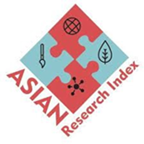Cognitive Discourse Analysis of Metaphors in Sahib Shah Sabir's Poetry
DOI:
https://doi.org/10.5281/Keywords:
Sahib Shah Sabir, metaphors, Cognitive Discourse Analysis, Pashto poetry, cultureAbstract
This study examines the utilization of metaphors in the poetry of Sahib Shah Sabir via the framework of Cognitive Discourse Analysis (CODA), seeking to reveal the cognitive, emotional, and cultural qualities inherent in his poetic language. Metaphors, typically seen as rhetorical instruments, are examined here as cognitive tools that organize abstract sensations such as love, suffering, struggle, and social awareness. Utilizing Conceptual Metaphor Theory (Lakoff & Johnson, 1980), the study investigates the manner in which Sabir’s metaphors translate tangible, embodied experiences into abstract realms, illustrating both personal cognition and shared cultural ideology. A qualitative research design was utilized, featuring a purposive sample of six representative poems extracted from Sabir’s principal collections. Collecting data meant closely reading and analyzing the original Pashto writings, with the help of reliable English translations to keep the meaning intact. The metaphors were rigorously found and classified, and their cognitive and cultural importance was analyzed using CODA principles. Special attention was gain to frequent conceptual metaphors like BLOOD IS LIGHT, LOVE IS STRUGGLE, PAIN IS FLOWING WATER, and ABSENCE IS FRUSTRATION. These show how Sabir links human feelings to social and ideological issues. The analysis indicates that Sabir’s metaphors act as embodied cognitive schemas that express both emotional intensity and cultural identity. His literary speech transmutes personal experiences of suffering, desire, and moral contemplation into collective emblems of resilience, resistance, and ethical awareness. The study also emphasizes the interplay of individual cognition, society frameworks, and linguistic expression, illustrating how metaphors function as conduits between personal thought and collective cultural comprehension. The results enhance the field of cognitive literary studies by demonstrating the complexity of Pashto poetic metaphor and its influence on perception, emotion, and social consciousness. This study emphasizes the necessity of examining metaphoric language for both its aesthetic attributes and its cognitive and cultural ramifications, providing a framework for subsequent research in non-Western literary traditions.
Downloads
Published
Issue
Section
License
Copyright (c) 2025 AL-HAYAT Research Journal (AHRJ)

This work is licensed under a Creative Commons Attribution 4.0 International License.












